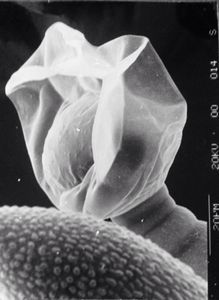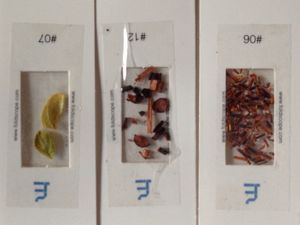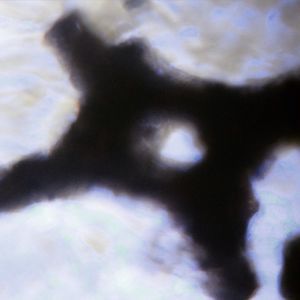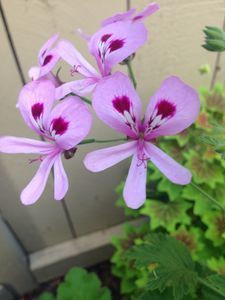Botanizing 2
 Apr 05, 2015 • 6:58 PM UTC
Apr 05, 2015 • 6:58 PM UTC Unknown Location
Unknown Location 140x Magnification
140x Magnification Microorganisms
Microorganisms
Lydia-Marie Joubert
Learn about the author...
7posts
2comments
1locations
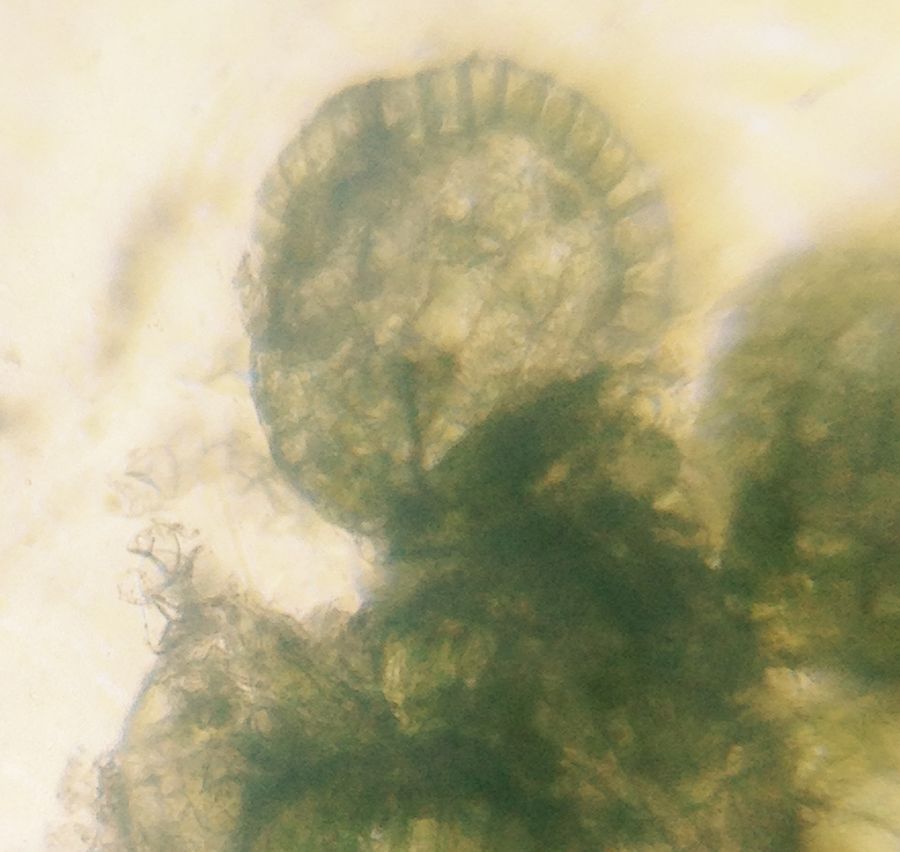
Looking at the fern in my backyard I notice small spherical bumps on the lower (abaxial) side of its leaves, or fronds. These tiny spheres are so-called ‘sori’ that contain spore-bearing sporangia. Ferns are part of the plant division Pteridophyta, which are very old and very smart, since they survived since the age of dinosaurs. Pteridophyta do not produce seeds in flowers like Angiosperms, or in cones like Gymnosperms, they propogate through tiny spores which they produce in sporangia. I cut away a small leaf, and looked at the plant, leaf and sporangia with my Foldscope and iPhone. After mounting a piece of the leaf on a paper slide, I could see the sori through the leaf, close to the vascular bundles, by using the light module and low mag lens. Then I used a toothpick to scrape off some sori, and mounted these in a drop of water between 2 layers of double-sided tape in a cardboard slide in my Foldscope. The structure of the sporangia was quite clear and beautiful with their thick-walled annulus cells that are hygroscopic and filled with water. In nature the thin-walled mouth cells shrink rapidly as moisture is lost, and release the spores as the mouth snaps open when the cells contract through desiccation . The spores are launched away from the plant and then first from a tiny haploid organism (with half the number of chromosomes) before it propagates into a new diploid generation. I was delighted to also see an open sporangium mouth with released spores.
Ferns are awesome!
Lydia Joubert
Ferns are awesome!
Lydia Joubert
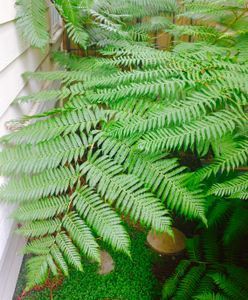
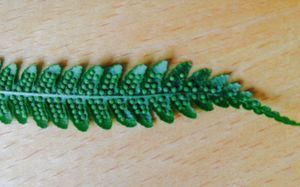

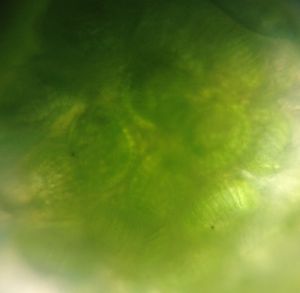
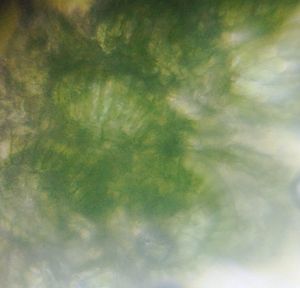
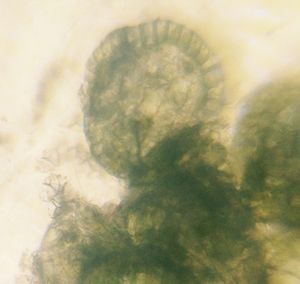
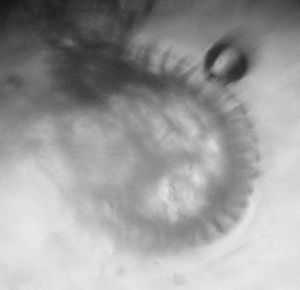
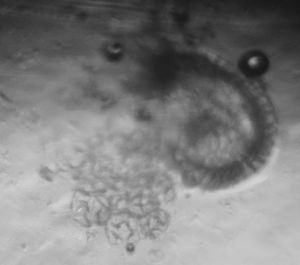
Sign in to commentNobody has commented yet... Share your thoughts with the author and start the discussion!

 0 Applause
0 Applause 0 Comments
0 Comments
